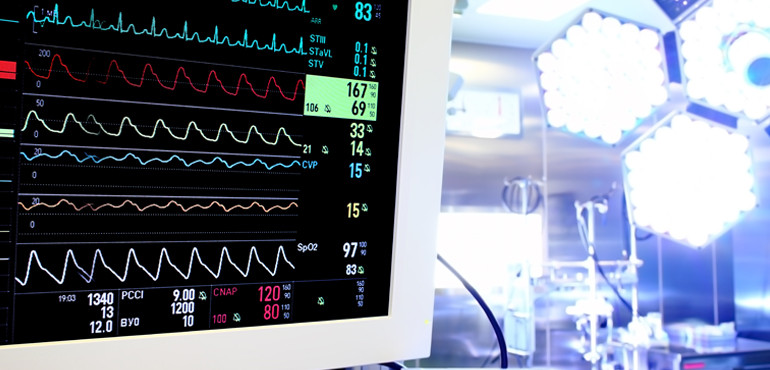Things you can implement right away to eliminate the bottlenecks in your discharge process and improve revenues.
We understand that as the CXO of a leading hospital,offering enhanced patient care while maximizing revenues, cutting costs and achieving operational efficiency are some your top priorities.
One of the primary factors that affect the operational efficiency is the delays that occur in the patient discharge process. The average time taken to discharge patients in most hospitals isin the order of 5-6 hours. While the delays seem inevitable at the time of discharge, they are a direct result of poor bed management, lack of proper coordination between the medical staff and lack of efficient planning from the time of patient admission.
The good news is that it can be changed. An efficient hospital discharge system can be as fast as a hotel check out with the right tools.
Here we list 6 process changes you can implement right away to eliminate delays in discharge and admit new patients faster.
1. Efficient billing system
Make sure your discharge process is designed such that consumables and procedures are charged at the time of consumption itself. This will ensure correct and transparent billing without confusion at the time of discharge. Having a centralized billing system between the various departments and facilities will allow easy real-time billing, making this process much easier. Most importantly, your billing department can provide details about interim pending amount at any point that the patient wants to know. Interim bill payments will also ensure that the patient does not ask for a discount at the point of final payment, expediting the discharge process.
2. Electronic charts and medical records
One big reason for delays in patient discharges is the discharge summary completion. Usually, junior doctors fill the discharge summary at the last minute, after the consultant has confirmed patient discharge. Updating the patient file on a regular basis will ensure that the complete information from the time patient is admitted is recorded, allowing faster discharge summary dictation. One way to automate this step is to maintain central electronic patient charts and adopt an efficient EMR system. This will allow the medical staff to update observations, medication, treatment plans etc. directly to the chart making the discharge summary process much easier.
3. Discharge planning during admission
Emphasize on a care plan – even if your clinical team says there may be uncertainty due to variations and a tentative discharge date cannot be put down. A care plan is the planned blueprint of a patient’s medical care that also predicts the expected outcome and tentative discharge date. Things may go a bit out of plan at times, but still everyone in the system is ready for a discharge, which ensures that the time taken is minimal.
4. Improve care coordination
The discharge process is lengthy and requires clearance from several departments once the consultant approves the patient for discharge. This is usually the longest step in the process and on an average takes well over 2 hours. Instead of running from pillar to post getting approval, one way to ensure all teams process discharge fast is to automate. Having an effective hospital information system will connect the various departments in the hospital on a central platform, making the communication between the different departments seamless. When the consultant triggers the discharge, the concerned departments will be notified right away, and can give clearance at the earliest time. This will slash the delays and make it possible to prepare the final bill in a matter of minutes.
5. Better bed management
There is usually a lot of confusion surrounding bed management in hospitals. A new patient who needs to be admitted has to typically wait for hours sometimes before being assigned a bed in the in-patient ward. One way to tackle this problem is to establish a central management system that triggers bed cleaning notice during discharge itself. This way, there is no delay between a patient leaving the hospital and a new patient being admitted. Further, having a centralized bed management system provides a quick snapshot on which beds are available making room and bed assignments to new patients more efficient.
6. Ensure Discharge Medication Reaches the Ward ASAP
Another step in the discharge process that may cause delays is getting discharge medication from the pharmacy. Confirming the discharge in advance and establishing automated inventory management systems in place ensures the excess medication return and discharge medication issue to the wards can be completed well ahead of time, easing out a major bend in the discharge process.
BONUS POINT: Deploy a robust insurance claims management process
Processing insurance claims is often a major area of time delay, and therefore patient dissatisfaction, at hospitals. What many people don’t realise is that the process for insurance claims and patient discharge actually starts right from the time the patient arrives at the hospital. Improving efficiency at each step in this activity by using a hospital insurance claims management solution can go a long way in avoiding delays and ensuring a fast, hassle-free patient discharge.
Patient discharge from the hospital involves both medical and non-medical teams working in tandem to ensure smooth operation. Even minor glitches can result in a very dissatisfied patient in spite of the top notch patient care at the hospital. These tweaks in your discharge process can work wonders for your patient satisfaction and make the operation seamless.
By implementing the above changes in the process and automating a large part of the hospital systems, it is possible to eliminate delays and bring down the entire discharge process to a bare minimum. The exit is as important as the entry.








